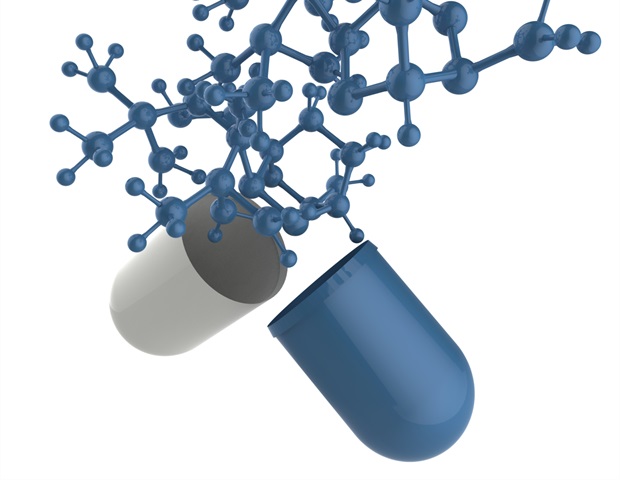Health
MSU Researchers Discover Key Insights into Staph Bacteria’s Resilience

Researchers at Michigan State University (MSU) have unveiled critical insights into the resilience of Staphylococcus aureus, a bacterium notorious for causing serious infections, including the antibiotic-resistant strain known as MRSA (methicillin-resistant Staphylococcus aureus). This groundbreaking study could pave the way for innovative approaches in combating antibiotic resistance, a growing global health concern.
The findings, published in mBio in 2025, reveal that Staphylococcus aureus exhibits a remarkable level of metabolic redundancy. The research, led by recent PhD graduate Troy Burtchett from the Department of Microbiology, Genetics, & Immunology at MSU, indicates that this bacterium can survive even when critical enzymes are disrupted.
At the core of this investigation is a class of molecules known as isoprenoids, which play vital roles in bacterial survival, including functions related to respiration and cell wall synthesis. Traditionally, an enzyme called IspA was thought to be solely responsible for the production of short-chain isoprenoids, essential components of isoprenoids. However, when researchers generated mutants of Staphylococcus aureus lacking the gene encoding IspA, they were surprised to find that the bacteria continued to thrive.
Burtchett explained, “How can the cell tolerate that? That’s really what started this project off. It was really just a basic science investigation.” This unexpected resilience led the team to further explore alternative pathways within the bacterium.
In collaboration with Neal Hammer, an associate professor at MSU, Burtchett hypothesized that another enzyme, known as HepT, might be compensating for the absence of IspA. Their research confirmed that HepT participates in previously unrecognized pathways essential for the synthesis of molecules necessary for respiration. This discovery suggests that HepT could be producing the short-chain isoprenoids in the absence of IspA.
To test their hypothesis, Burtchett, Hammer, and doctoral student Jessica Lysne engineered a double mutant that lacked both the ispA and hepT genes. Surprisingly, the bacteria remained viable, indicating the potential presence of a third, unidentified enzyme that compensates for the loss of both IspA and HepT.
Burtchett noted, “One of the conclusions is that there is an incredible level of redundancy in isoprenoid synthesis in S. aureus. This has never been demonstrated before.” This redundancy may not be limited to Staphylococcus aureus; rather, it could be a widespread phenomenon among other bacterial species like E. coli and Pseudomonas.
The implications of this research are significant, particularly in the context of rising antibiotic resistance. As bacteria evolve to resist existing antibiotics, identifying new, previously untargeted metabolic pathways could lead to the development of novel drugs. Burtchett emphasized, “If it’s new, there’s probably not existing resistance to it. It might be more difficult to gain resistance to it, and you can get more use out of that antibiotic.”
Looking forward, the research team hopes their findings will inspire further inquiries into antibiotic development. Hammer stated, “Dr. Burtchett’s findings open exploration into several new areas of research, the most relevant being the identity of the third short-chain isoprenoid synthesis enzymes. Identifying this enzyme will provide new targets for therapeutic intervention.”
The study was supported by a grant from the National Institutes of Health (NIH), underscoring the importance of this research in addressing one of the most pressing challenges in modern medicine. As antibiotic resistance continues to threaten public health, the insights gained from this study may play a crucial role in developing effective treatments against resistant bacterial infections.
-

 Health3 months ago
Health3 months agoNeurologist Warns Excessive Use of Supplements Can Harm Brain
-

 Health4 months ago
Health4 months agoFiona Phillips’ Husband Shares Heartfelt Update on Her Alzheimer’s Journey
-

 Science2 months ago
Science2 months agoBrian Cox Addresses Claims of Alien Probe in 3I/ATLAS Discovery
-

 Science2 months ago
Science2 months agoNASA Investigates Unusual Comet 3I/ATLAS; New Findings Emerge
-

 Science2 months ago
Science2 months agoScientists Examine 3I/ATLAS: Alien Artifact or Cosmic Oddity?
-

 Entertainment2 months ago
Entertainment2 months agoLewis Cope Addresses Accusations of Dance Training Advantage
-

 Entertainment5 months ago
Entertainment5 months agoKerry Katona Discusses Future Baby Plans and Brian McFadden’s Wedding
-

 Science2 months ago
Science2 months agoNASA Investigates Speedy Object 3I/ATLAS, Sparking Speculation
-

 Entertainment5 months ago
Entertainment5 months agoEmmerdale Faces Tension as Dylan and April’s Lives Hang in the Balance
-

 World3 months ago
World3 months agoCole Palmer’s Cryptic Message to Kobbie Mainoo Following Loan Talks
-

 World4 weeks ago
World4 weeks agoBailey and Rebecca Announce Heartbreaking Split After MAFS Reunion
-

 Science2 months ago
Science2 months agoNASA Scientists Explore Origins of 3I/ATLAS, a Fast-Moving Visitor









